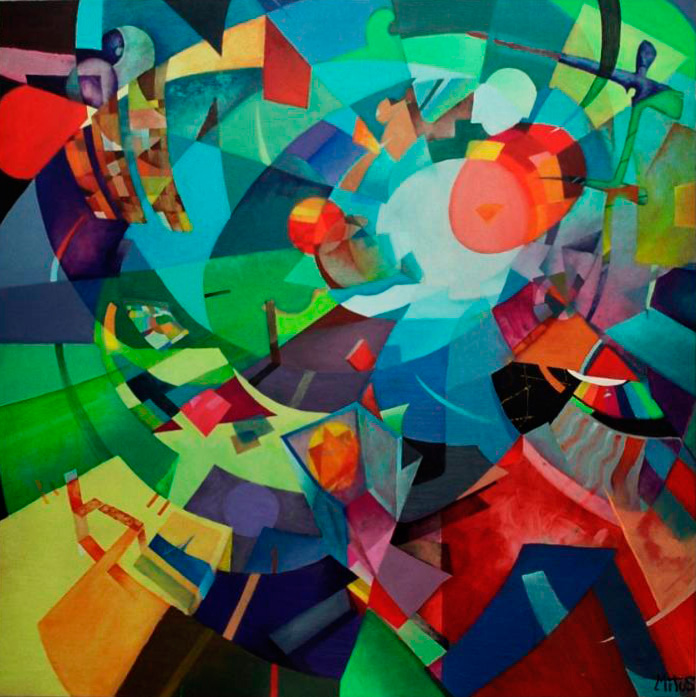
About Organic Art
For many years I’ve considered my work as ‘organic’. The creative stage between 2003 and 2005 come in full this thought entirely.
But what’s exactly that I understand by ‘organic work’ and what kind of relationship does it have with the subsequent development proposed by the Transfiguration?
Organic Art has always been guided by the goal to create ‘total works’, encyclopedic works that are a world in itself, with its own logic and structures that shape the content that give it life. Organic Art promotes a diverse but integrative cosmos vision, where complementaries elements inhabit a common space. The viewer must feel inevitably attracted by this exotic window.
There was the intention to include a wide variety of forms, creatures and elements to show affinities and differences between them. In some way the work is understood as a world. Artist creates this world for a hypothetical viewer who must observe the work carefully if he wants to enjoy it.
I think it’s important to emphasize the role played by music in this approach. This bet forced the creation of compositional rhythms, compositional structures to group easier the elements, which also helps to understand the image. Although formally the differences are insurmountable I think that the idea of rhythm, as well as the idea of ‘silences’, are perfectly extrapolated to painting. Musical figures and other elements or structures can be adapted to the painting, contributing with remarkable results. They allow how to organize the works correctly. Music can provide solutions, tools to solve compositions who can’t go forward.
The principles of Organic Art are also extensible to abstract compositions. In fact, all theory referring to ‘organicism’ is not inclined at all towards figuration, its principles are applicable to various plastic languages. Moreover, abstract art can enjoy a formal purity released from the confusions that we sometimes find in the referentiality, although we have the opportunity to express the immense possibilities offered by the Organic Art in each artistic language.
Now, it’s very clear for me that the concept of ‘organicism’ has changed, it has evolved naturally and progressively towards the concept of Transfiguration. It’s through the Organic Art that I advanced constantly to the concept of Transfiguration. Somehow the Transfiguration includes the principles of Organic Art, but they apear sublimated now.
The Organic Works could include free or interchangeable elements (contingencies) because these art pieces worked on a compositional level but perhaps not at the conceptual level. Now, with Transfiguration, the works are articulated primarily on a conceptual level -the contribution of the work’s deep meaning- and then we develop the composition through which it’s reflected this concept, meaning or idea.
It’s clear that in my Organic Art stage I enjoyed a creative freedom that has been diminishing as the Transfiguration has been growing. Somehow I think the Transfiguration is nothing more than the same Organic Art demanding more awareness about all the elements that make up the different compositions, but this makes the progress of every work slower and difficult.
